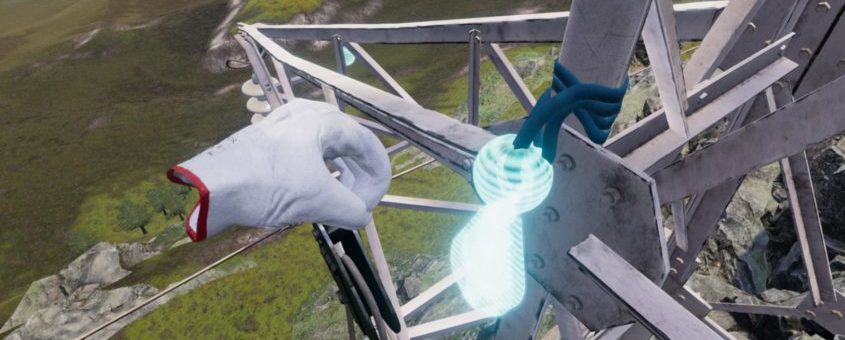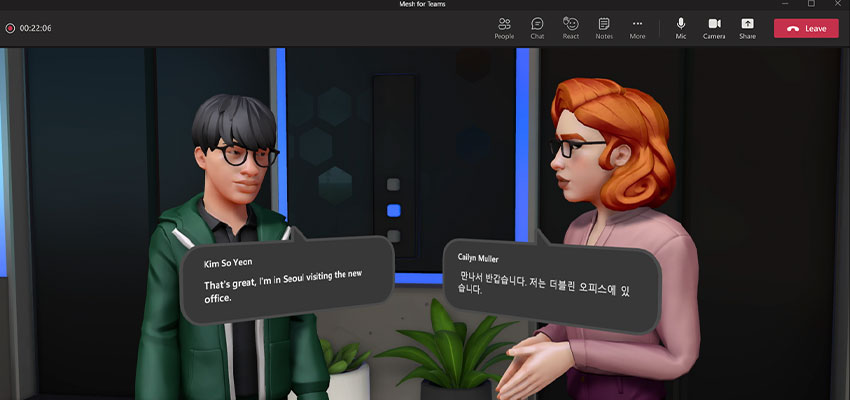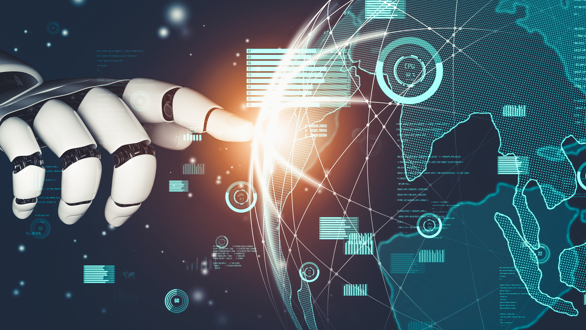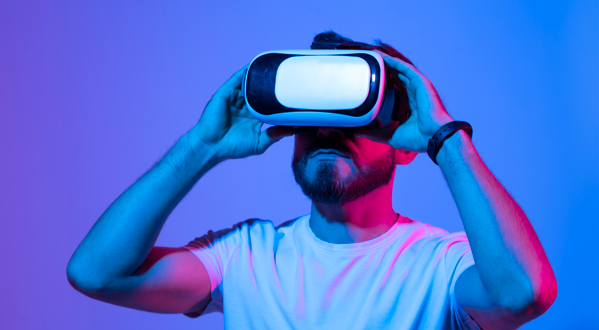One of the questions that executives ask themselves the most about the metaverse is related to its usefulness. Aside from marketing and events, where the advantages of virtual and augmented reality are evident, why should a company, perhaps a Head of HR, invest in these technologies? The answer lies in the possibility of enhancing training and development in the metaverse for their employees, saving time and money through simulated experiences that are completely risk-free and at the same time much more effective than traditional options.
Augmented, virtual, and mixed reality: the numbers of a rapidly growing market
The adoption of virtual reality devices and solutions is increasing, as is the number of users globally. An additional boost will be provided by the widespread deployment of 5G, which will make virtual experiences accessible anywhere, both in the consumer and business domains. The rate of adoption hasn’t been as rapid as predicted by Gartner in 2018 when it suggested that within two years (by 2020), 46% of retailers would consider adopting AR or VR solutions. However, we must consider that the pandemic and the problem of component shortages, especially chips, have slowed down production. Despite this, the adoption of these technologies doesn’t seem to be in question, and in 2021, IDC predicted an 88% growth in the AR/VR sector, bringing the value of this market to the threshold of $2.8 billion, a value that is expected to rise to $20.9 billion by the end of 2025.

Virtual and Augmented Reality: How They Will Revolutionize Training in the Metaverse
Since virtual reality and augmented reality began to emerge in the market, one of the most interesting use cases for companies has been to leverage this technology to enhance training and development procedures for their personnel, while simultaneously reducing costs and improving the user experience. This concept is almost inevitable when we consider what happens in highly specialized fields such as aviation or motorsport. Airplane pilots, for instance, wouldn’t be able to safely experience the riskiest procedures without flight simulators, which accurately replicate the operation and cockpit of each specific aircraft. The same applies to the automotive industry, where simulators are used in various categories, including Formula 1, to train drivers and test the impact of aerodynamic modifications, such as a new wing. In junior formulas, simulators are an essential tool that allows young drivers to accumulate track experience without incurring the high costs of circuit rental, fuel, and tires.
So why not consider training in the metaverse for other areas, such as industrial machinery operation or compliance with safety procedures? By adopting VR and AR headsets, there is no longer a need to use replicas of locations and machinery or to transport personnel to specially equipped sites. This approach can work well in various sectors, starting with the industrial sector, especially in companies dealing with procedures that take place in hazardous environments, from the depths of the sea to space travel, for example, but not limited to these. Think, for instance, about applications for the mining industry or gas and oil extraction.
AR and VR simulations are also valuable for better understanding operational procedures and for learning purposes. While remote online courses lack effectiveness compared to in-person training, wearing virtual reality headsets can reproduce the classroom experience, facilitating collaboration among students and between teachers and students. This approach also contributes to the development of soft skills, which are non-technical competencies increasingly sought after by employers.
The Benefits of Training and Development in the Metaverse for Businesses and Learners
Until a few years ago, the idea of having workers wear a headset during training sessions may have seemed futuristic and applicable only to a few large enterprises. However, attitudes have changed. The costs of devices have decreased, and more and more companies are developing solutions to meet these needs. The COVID-19 pandemic has also played a role in driving the adoption of VR and AR solutions for remote support, which is one of the main advantages offered by these technologies.

REMOTE ASSISTANCE
Typically, when an industrial machine malfunctions, it requires a team of technicians to intervene, often needing to travel from the other side of the world to resolve the issue, resulting in long delays and high costs. However, with VR and AR, technicians can analyze the problem remotely and, in many cases, even guide a user physically present at the site to solve the issue, thereby reducing machine downtime.

EFFICIENCY AND SAFETY
In addition to remote assistance, VR and AR can be used for remote training in the metaverse, allowing workers to receive training on-site, avoiding travel, reducing costs, and also improving the effectiveness of these sessions. Being able to experience and interact with virtual objects makes the training experience more engaging and enjoyable compared to traditional manuals and instructional videos, thus enhancing learning and memory retention. Training conducted in this manner often resembles experiences with video games, helping to maintain high levels of interest throughout the training sessions. Most importantly, it significantly improves safety. A worker who needs to perform delicate operations in hazardous environments (such as underwater welding at great depths or managing and maintaining nuclear or gas facilities) will feel much safer if they can test procedures tens or hundreds of times in a virtual environment before carrying out the actual work.

SOCIALIZATION
Lastly, the metaverse facilitates socialization when individuals are physically distant. Interacting and communicating with others in a simulated environment is much more effective and engaging than traditional phone calls or virtual meetings via platforms like Zoom, Teams, and others. During the pandemic, some companies’ HR departments have already started experimenting with this approach when travel was impossible, and many intend to continue even after the Covid emergency is over.
Actions Speak Louder Than Words: Concrete Use Cases of VR and AR
In theory, everything sounds great, but are we truly confident that these scenarios will materialize? Objectively speaking, it must be acknowledged that only a small percentage of companies have made pioneering investments in these solutions. However, the experiments conducted so far have been well-received, and these same companies are considering expanding the use of VR and AR. Furthermore, other companies are planning to adopt these technologies shortly, including in Italy.
One such example is Enel, which, in collaboration with the Sant’Anna School of Advanced Studies in Pisa, has implemented a metaverse training project for its power plant operators. This project is used both to train technicians in routine maintenance operations and to provide a risk-free environment for experimenting with confined space operations or delicate components such as valves or boilers.
Italian company Olivetti has also been tempted by virtual reality for training its specialized printer technicians and has established a dedicated VR Academy. In this case, the focus is not on potentially hazardous environments but on making training sessions more engaging through the use of an HTC Vive headset.
Still, within the national borders, we can mention the example of Dallara, a well-known name in the automotive industry that has long relied on technology (primarily CFD simulations and 3D printing, among others) to develop its vehicles, including the IndyCar series and supercars, and to support other manufacturers, including the Bugatti Chiron supercar. Dallara has installed one of the most advanced driving simulators at its headquarters in the Motor Valley of Emilia-Romagna. However, they also cater to home enthusiasts using more modest simulators, such as the Assetto Corsa simulation by Kunos Simulazioni, another Italian company. In 2020, they launched the Dallara Esport Championship, which is now in its second edition, allowing participants to compete remotely from their homes using their setups, including VR headsets fully supported by Assetto Corsa. This initiative aims not to revolutionize processes or improve the training of their technicians but to bring the world of racing, which is extremely costly, closer to people who may not have the financial means to race on asphalt tracks.
Moving beyond the peninsula, virtual reality is widely used in the medical field. According to Sciensoft, a consulting and software development company, the VR training market alone will be worth 6.8 billion by the end of 2022. Among the industry giants that have already adopted virtual reality is Johnson & Johnson, which uses it to train surgeons through simulated operations. The results are astonishing: experiments conducted at Imperial College London show that 83% of students who trained with VR were able to perform the procedures unassisted or with only minor guidance. None of the students trained using traditional methods were able to do so.
Finally, virtual reality is also used by NASA astronauts for safely experimenting with complex maintenance operations on the International Space Station (ISS). And it’s not just on the ground: the VR headsets and all the necessary hardware are part of the ISS equipment.


